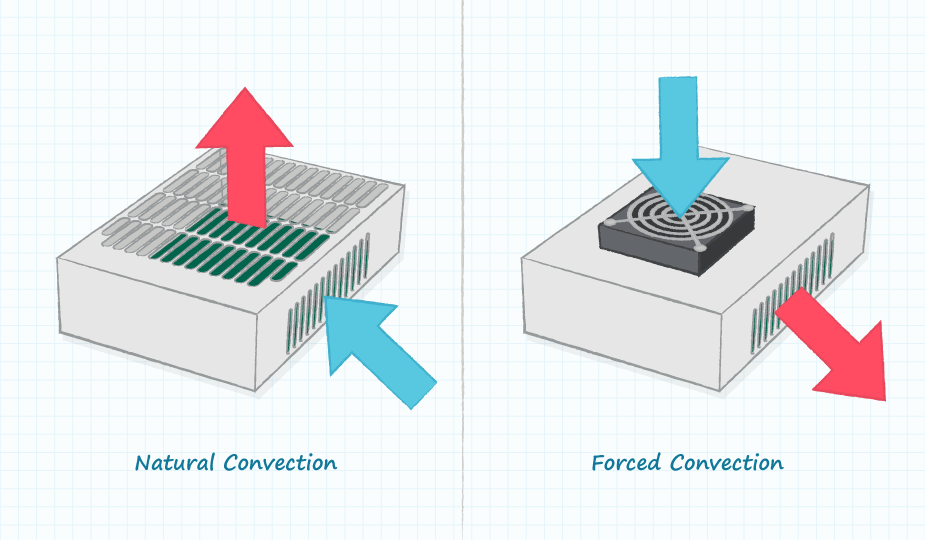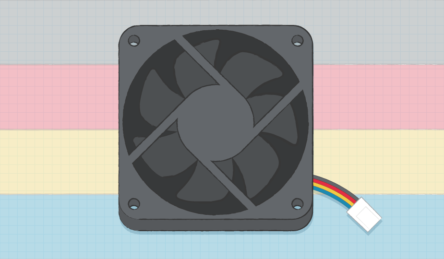Fans are widely used for many reasons, both individually and in clusters, to provide forced-air convection cooling. They are easy to use, provide vital airflow, and can be installed in a variety of chassis and systems locations. Their operating principle is basic physics: moving air is effective in cooling objects by absorbing heat from the object and then transferring that heat elsewhere to be dissipated. The amount of energy transferred is dependent upon the mass of the moving air, the specific heat of the moving air, and the temperature change imparted to the moving air.
 Forced-air cooling is an implementation of the well-known thermal-convection principle
Forced-air cooling is an implementation of the well-known thermal-convection principleOnce the design engineer has determined the required minimum airflow using basic thermal analysis (see “Understanding Airflow Fundamentals for Proper Dc Fan Selection”), including modeling of heat sources, temperature rise, and ambient conditions, in addition to providing a suitable airflow path from air intake to exhaust port, a fan with suitable size and airflow can be selected. An engineer could then simply connect the selected fan(s) to a power source and verify the performance with some basic temperature-rise testing.
However, given the critical role of fans for ensuring that there is efficient, adequate cooling in forced-air designs, this is a simplistic and short-sighted approach. While a direct power connection will certainly work, a well-designed, fan-based, forced-air cooling design can do much more. With some additional planning and proper fan selection, designers can instead provide efficient and reliable operation via fan monitoring, control, and management.
On/Off Fan Control
Basic fan operation is easy enough: just apply power to turn the fan on full time. While effective, this uses the most amount of power, creates a constant background noise that may not suit all applications, and ignores the reality that fans have a long, but still-finite operation life. An alternate approach is to turn the fan on and off based on the sensed air temperature compared to a preset cooling threshold (the setpoint). This extends fan life, saves power, and eliminates acoustic noise when the fan is off.
Yet, from a thermal management perspective, this simple on/off fan control has weaknesses. First, it introduces thermal cycles to the components being cooled, as they go through heating/cooling/heating sequences. Such cycling is a contributor to premature component failure caused by repeated stress on materials and joints due to differences in temperature-coefficients. In some cases, this cycling can be as damaging or even worse than just operating continuously at an elevated temperature.
Second, there is unavoidable thermal overshoot between the time that the fan is turned on and the time it takes for that airflow to begin cooling. This can lead to overheating until airflow cooling “catches up”, unless the “turn on” threshold is set lower. Finally, hysteresis needs to be added to avoid on/off “chattering” during fan operation around the desired temperature setpoint.
The graph below demonstrates how the temperature can exceed or overshoot the setpoint due to unavoidable thermal lag, where the light blue line represents the desired setpoint temperature, including a step change, the green line is the on/off cycling of the fan, and the dark blue line is the actual temperature.










